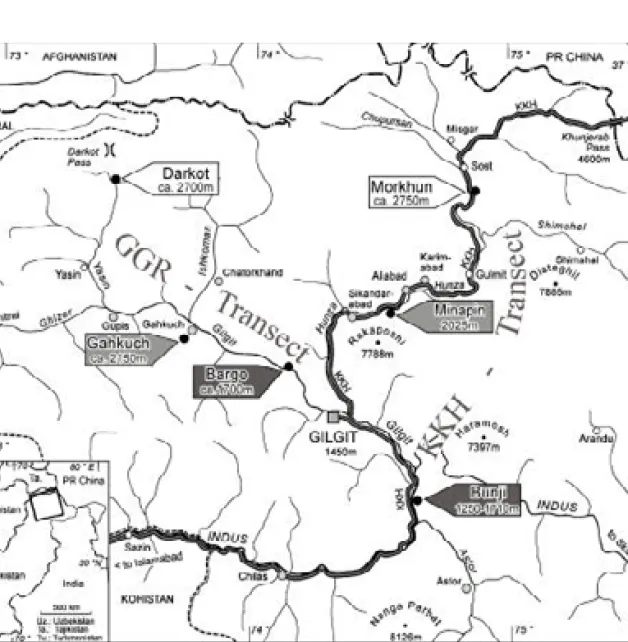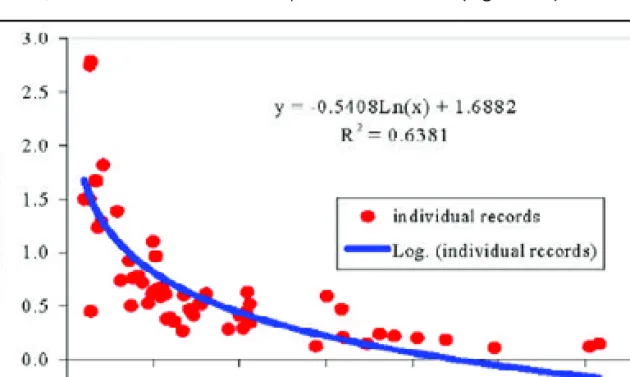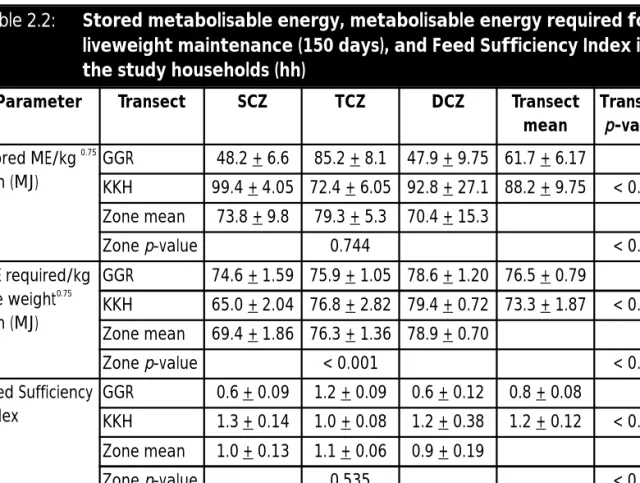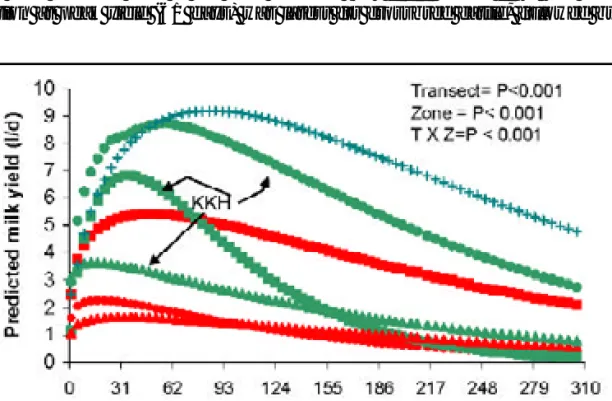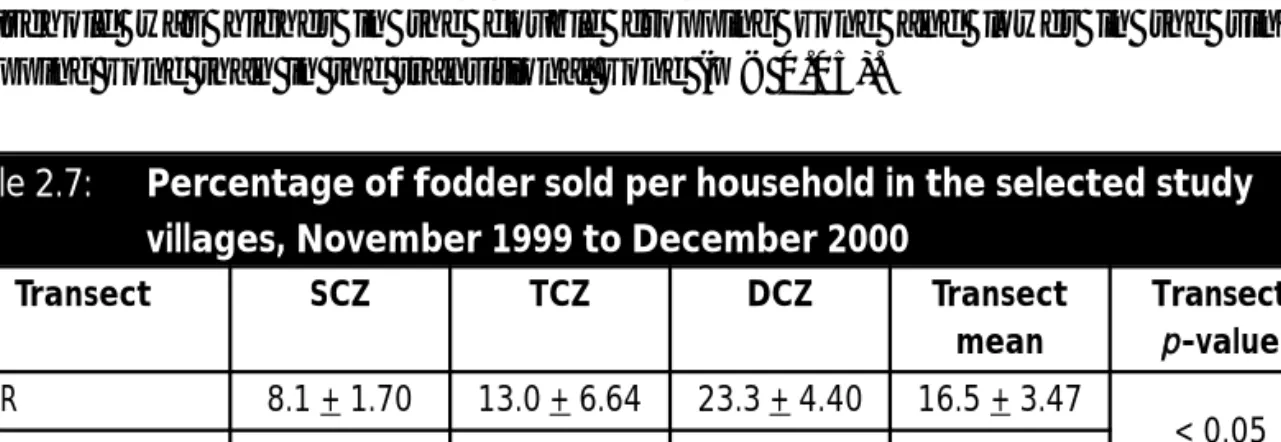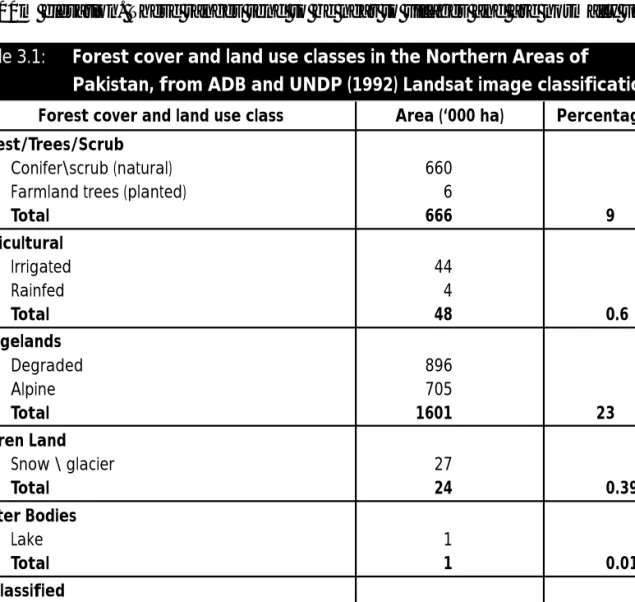The last part of the project dealt with socio-economic and external issues surrounding livestock production in the northern areas. The project has identified a number of constraints and opportunities for the future development of the livestock sub-sector in the northern areas of Pakistan.
C ONTENTS
The Northern Areas of Pakistan
Livestock production within the agro-pastoral system
This movement of animals from villages to pastures has the dual role of exploiting the nutrient sources of high pastures and avoiding damage to arable crops during the summer months. In the fall, livestock are returned to the villages to complete the annual transhumance cycle (Nuesser and Clemens 1996).
Recent change in the Northern Areas
Since its inception in 1982, the Aga Khan Rural Support Program has contributed significantly to the socio-economic development of the northern areas and Chitral. Mission:: AKRSP's mission is to increase the capacity of the people of the Northern Areas and Chitral to sustain and improve their quality of life.
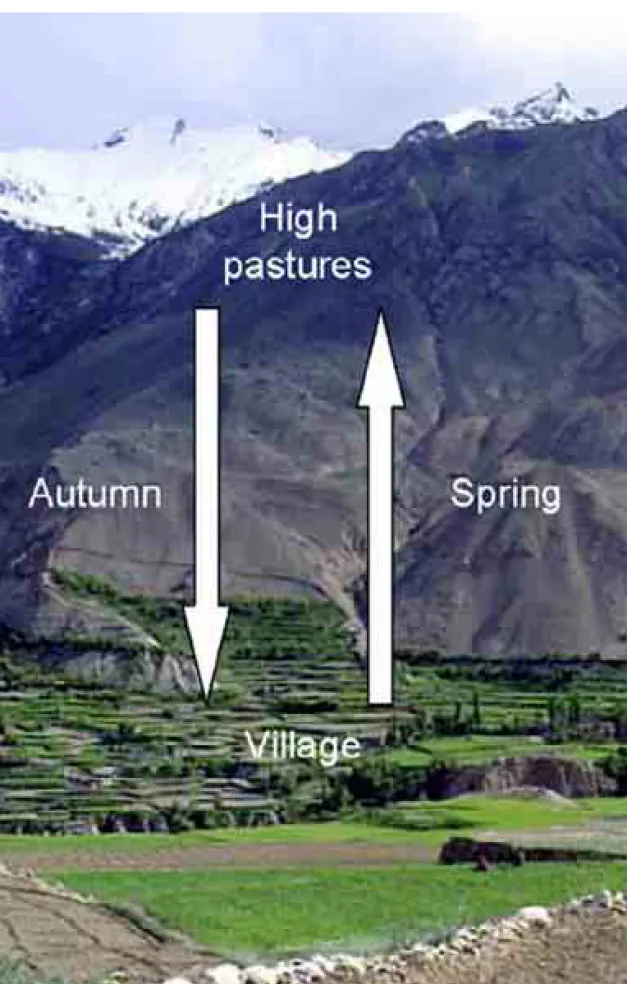
Study design
Thus, the project adopted a systems approach to allow assessment of the impact of change in individual system components on the entire system. The chapters that make up the rest of this volume present the detailed findings of the various components of the project.

These are then brought together in a final synthesis chapter that draws on systems thinking to assess the most significant constraints to change within livestock farming.
Introduction
Design
Field data collection began at the beginning of the winter season in 1999 and lasted for 18 months. All livestock owned by the study households were ear-tagged at the beginning of the study.
Herd composition and herd weight
One village was selected for each of the six cells in the project, and using a stratified sampling procedure, six to seven households were selected for each village, representative of the range of herd/flock sizes. The daily milk yield of all lactating animals was recorded during one day per visit to the village.
Feed inputs
For example, 22% more grain residues were stored in the KKH transect than in the GGR transect. The average amount of dry matter that was offered per cow per day in winter, was 44% higher (p < 0.001) in the KKH transect than in the GGR transect (Table 2.3).
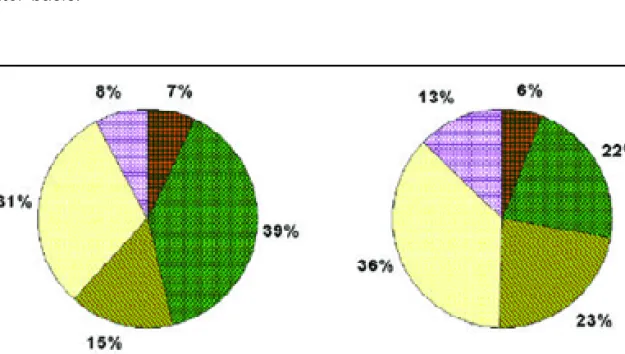
Outputs from livestock
This more severe loss of condition was probably related to lower forage availability during winter in the GGR transect. Daily milk production was significantly higher (55%) in the transitional cropping zone than in the single cropping zone (p < 0.01). The higher level of milk production in the KKH than in the GGR transect provides further evidence that livestock were better fed during winter in the KKH transect.
Kidney and lamb percentages of goats and sheep were also higher in the KKH transect than in the GGR transect (grap percentages were 99% and 79%, respectively).
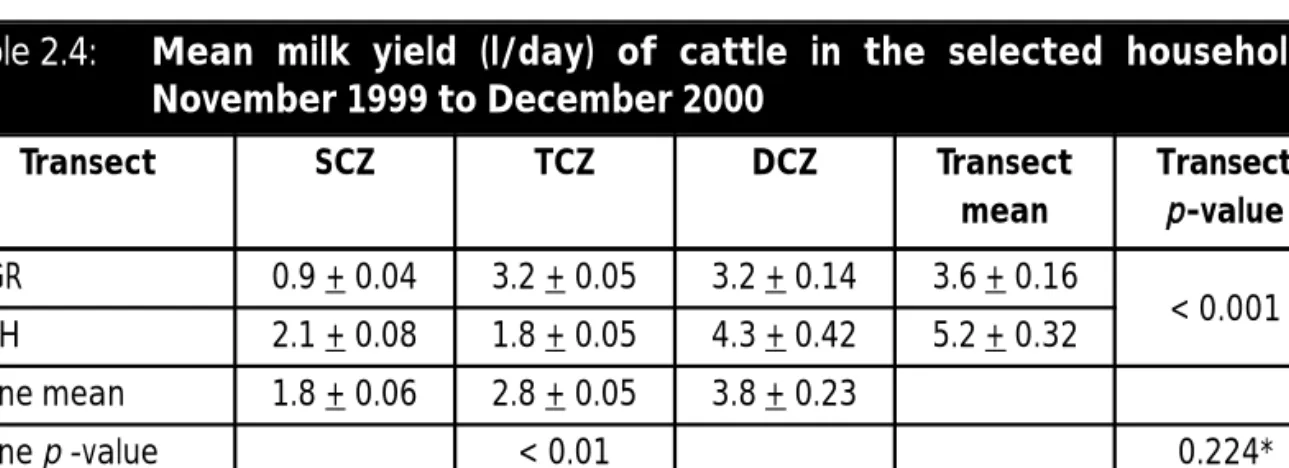
Livestock and fodder trading
The higher number of animals per household in the GGR transect would have the dual effect of reducing feed resources and reducing the attention farmers were able to devote to reproductive management. Higher levels of livestock and fodder trading in the GGR transect occurred despite poorer road infrastructure. Herd sizes were also larger on the GGR transect, allowing a greater number of animals to be traded.
Furthermore, alfalfa was grown on marginal areas on a larger scale in the GGR transect for subsequent sale on the market.
Conclusions
However, the village where fodder sales were highest (Bargo) was at the lower end of the GGR transect and thus only about 30 km from the capital city of Gilgit. 2000) "Why has animal research had minimal impact on reducing rural poverty in Asia?". 1980) "Use of the nylon bag technique for forage evaluation". 1987) "Livestock Symbolism and Pastoral Ideology among the Kafirs of the Hindu Kush". 1971) "Recovery of information between blocks when block sizes are unequal". 1987) "Estimation and Use of Variance Components". 1999) "Factors affecting milk production of grazing cattle herds in Kenya". 1969) "Subjective estimation of body fat in live sheep". 1992) 'The Economic Value of Livestock in Communal Areas. 1996) 'Production performance of Sahiwala and different types of crossbred cattle'. 1989) 'Livestock Production and Fodder Resources in Gilgit District, Northern Areas of Pakistan'. 1965) "An algebraic model of the lactation curve in cattle". 1976) "Algebraic lactation curve models for milk, fat and protein production with estimates of seasonal variation". This chapter describes the results of rangeland studies carried out as part of the Agri-Karakoram project, with the overall aim of obtaining information on the ecology of mountain rangelands in the northern areas of Pakistan.
The second was to measure biomass production and vegetation utilization, and identify key differences in pasture use between the two geographic transects, determining where possible the causes of any differences found.
Pasture ownership and management
The first was to classify and characterize the vegetation communities present in the study area and their distribution.
Rangeland types and distribution in the Northern Areas
Livestock graze this range type during the spring season as they move to the alpine range type, and the autumn as they return to the villages. An approximate estimate of the rangeland associated with each village was made at the start of the study. Along the Gilgit-Ghizer (GGR) transect, Gahkuch-Bala village had a relatively small total pasture area, Bargo-Bala had a medium-sized area, and Darkot had a large total pasture area.
Although total grazing areas varied between individual villages, the total area available in each transect was similar.
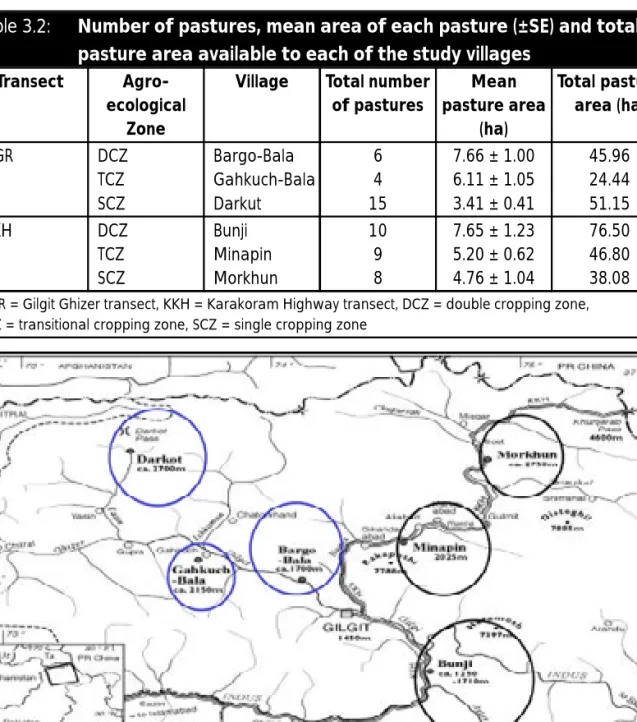
Preliminary pasture survey
On the Karakorum Highway (KKH) transect, Bunji had an extremely large total pasture area (the largest of the six villages), while Minapin and Morkhun had medium-sized pasture areas.
Characterisation of vegetation communities
Mean plant percentage cover data per transect was used to classify the samples (Castle 1976) into groups that form the plant communities described later in this chapter.
Composition
The vegetation consisted of very sparse shrubs in the foothill type, less sparse shrubs in the temperate zone, and dominant grasses and forbs in the alpine zone. In the alpine meadows, TWINSPAN analysis of plant cover data indicated that Antennaria nana-Potentillaspp. In the foothills plant community, Pennesitum lacutum-Ephedra gerardiana community was found only in the foothills of Bunji village.
Ephedra gerardiana shrubs provided favorable conditions for the grass, Pennesitum lacutum, which grew in the shade of the former.
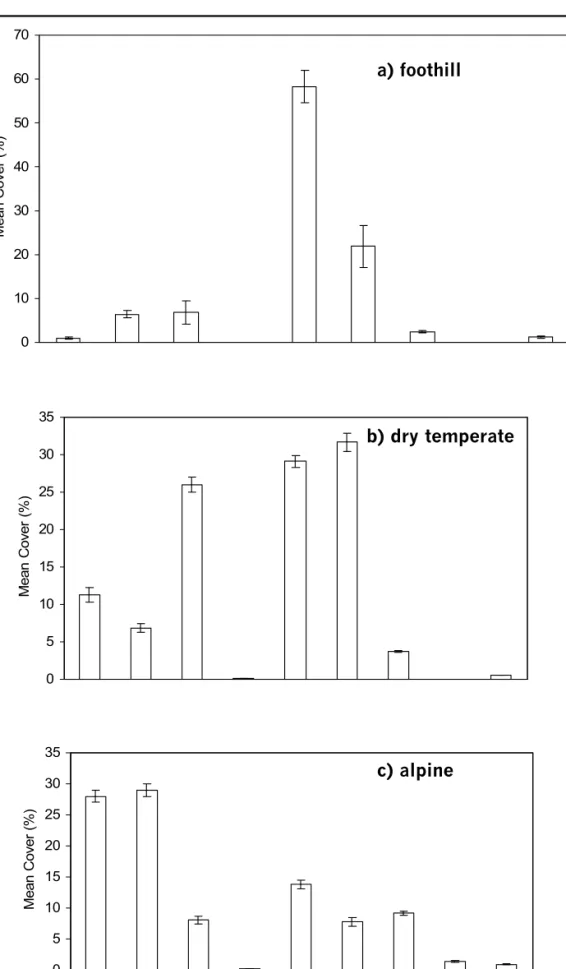
Production and utilisation of forage resources
The general trend in livestock use was that alpine pastures were used more intensively than arid, temperate, and foothill pastures. We hypothesize that more water from snowmelt led to greater production levels and biomass in the alpine meadows, which in turn allowed for heavier use. In the alpine type, biomass remained relatively high throughout the growing season (Table 3.3).
Vegetation changed from very sparse shrubs in foothill pastures to less sparse shrubs in dry temperate pastures to forb/grass dominance in the alpine range type.

The livestock sub-sector – recent trends
Kreutzmann (2000) provides an example of the general decline in individual herd sizes in Hunza in the context of socio-economic change. The average total herd size in the current study ranged between 7 and 42 animals per household (Table 4.3). However, more than half of all households, and almost all households in the more remote parts of the GGR transect, still reported using animals for ploughing.
Only in the most remote villages of the GGR transect was traction given as a reason for keeping livestock (Table 4.5).
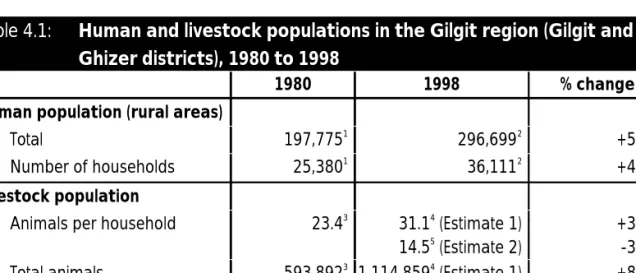
Land holdings and cropping patterns
In general, the average land holding per household not these levels even in the double crop zone. The cropping patterns in the study villages reflected major changes from previous subsistence farming systems, caused in part by the assured supply systems for staple foods. Not all irrigated land was cropped, especially in the transition zone villages of Minapin and Gahkuch in the second cropping season.
In the transition zones, a second crop of maize is only possible after a first crop of barley, which has a short growing period.
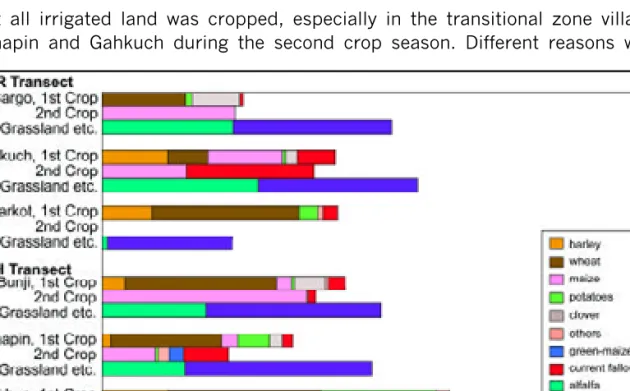
The economics of the livestock sub-sector
These land use patterns are broadly similar to those found in several other studies of changing farming systems in the northern areas of Pakistan (Khan and Khan 1992; Kreutzmann 1993; Nüsser and Clemens 1996; Streefland, Khan and Lieshout 1995). The share of livestock in total farm income varied from 37 to 43% at the regional level, compared to 32 to 36% for crops and vegetables (AKRSP 2000). None of the surveyed households sold fresh milk; milk is sold in other villages, but at the regional level the sale of fresh milk is negligible.
Imports are highest in winter, when meat consumption by the local population (as well as the availability of locally produced animals) is traditionally highest (see Figure 4.4).
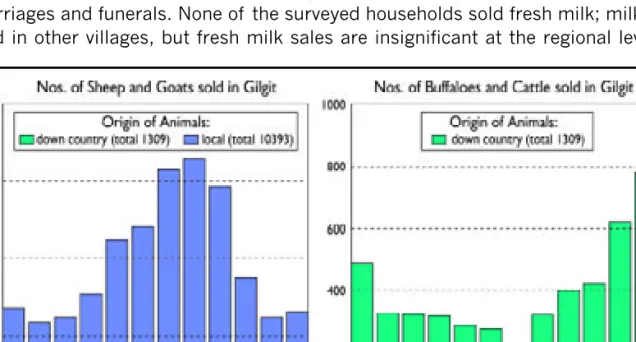
Constraints to livestock productivity
Yet almost 60% of farmers in the six study villages rated their feed resources as surplus (Table 4.8). The farmers of Bargo benefited from the agro-ecological potential of the dual cropping zone and from their proximity to Gilgit. This example indicates an awareness among a small sector of Figure 4.5: Farmers' identification of major problems in keeping animals.
In three of the six study villages – Bunji, Morkhun and Darkot – this issue was perceived to be as serious as the lack of fodder resources (Figure 4.5).

Utilisation of pastures
In Minapin, 12 out of 20 households surveyed kept most of their animals close to the farm year-round, and five households did not send animals to summer pastures. There is a common misconception that systems research means studying every conceivable process or event that could affect the functioning of the system. It is therefore important to take into account the household or farmer's objectives in keeping livestock.
Connections with other parts of the agricultural system and the wider socio-economic context can be seen as inputs to and outputs from the system (Figure 5.2).
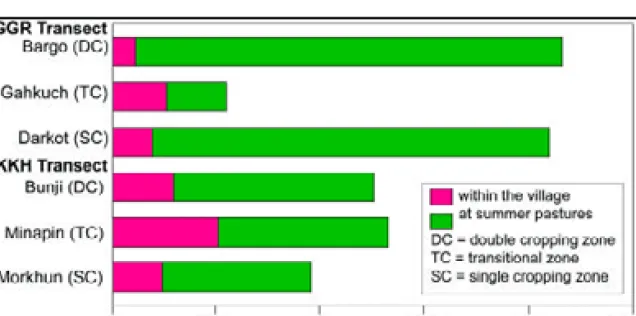
Outputs from the livestock system
Inputs to livestock systems
Household decision
Livestock
Livestock feeding and productivity
Summer grazing
Interestingly, when households were asked about their perception of the carrying capacity of summer pastures, 57% felt that KKH pastures could support more animals, but only 49% of households in the GGR transect felt that their summer pastures could support more livestock . .
Labour inputs to livestock husbandry
First, the amount of labor available for animal care is reduced because children, who traditionally care for livestock, spend more years in school. Second, a higher level of education raises expectations, especially among young people who may not be content to stay at home and engage in traditional activities such as farming, but may prefer to move out of the area to seek alternative employment opportunities. Overall, most farmers in the survey had reduced the size of their herds and herds over the previous five years, although there were differences between villages, with labor availability cited as one of the main reasons (Chapter 4).
Village workshops
Options for improving livestock productivity
However, winter cereal production is practiced in some villages in the double cropping zone and to a limited extent in the transition zone. However, prior to the introduction of new crops or production patterns, the use of existing forage stocks must be optimised. This study clearly identified some of the key constraints acting on livestock in these systems.
Livestock Production and Feed Resources in Gilgit District of the Northern Areas of Pakistan, Livestock Paper No.
